What it feels like when you've found product-market fit — by Lenny Rachitsky
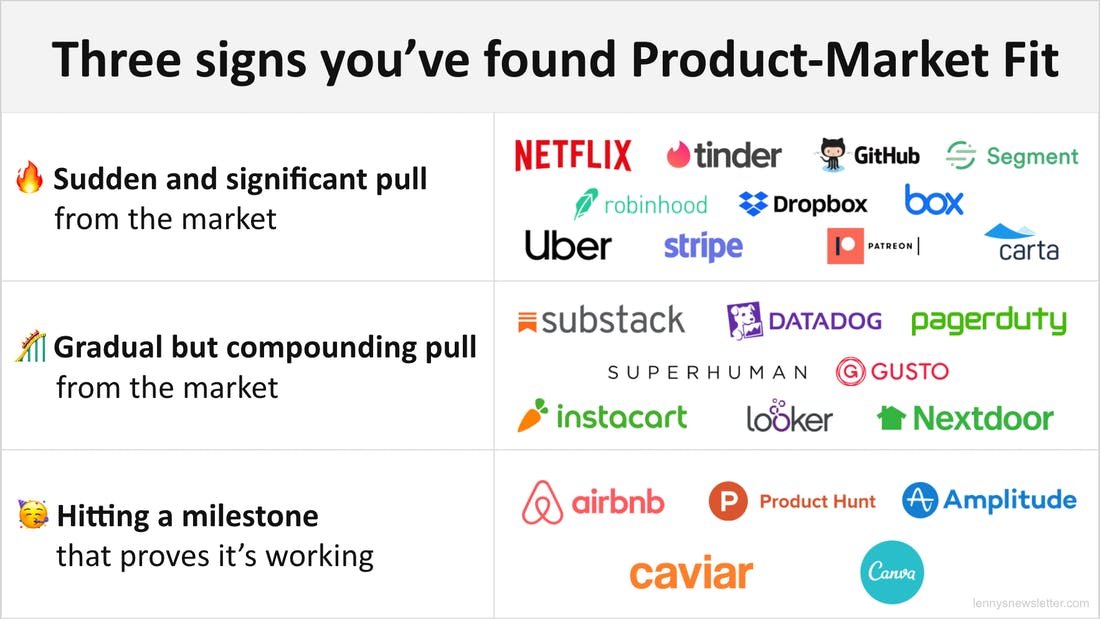
Stories from the founders of Netflix, Uber, Airbnb, Substack, Stripe, Datadog, GitHub, Segment, Dropbox, Superhuman, Instacart, Nextdoor, and many more
Lenny Rachitsky is a writer, angel investor and adviser. He writes a weekly product and growth newsletter on Substack. Find him on Twitter: @lennysan.
Q: How do I know if my product is working? What does it feel like when you’ve found “product-market fit”?
“When we hit PMF, we started feeling pull for the first time”
“Like getting pressed into the back of your seat by a fast car or a plane taking off”
“Word of mouth was uncontrollable”
“Why won't you take my money???”
“Yeah, you really can't miss it”
This is what you hear from successful founders when you ask them what product-market fit felt like. But is this always what it feels like? I wanted to find out.
Over the past few months I reached out to founders of the twenty five most iconic companies I could get a hold of and asked them one question:
When did you first know you found product-market fit? Whatever that point means to you – was there something you noticed, felt, or experienced where you were like “Damn, I think we got something here!”
After collecting and reviewing their stories (all of which you’ll find below), one thing became clear: every company did have a clear moment where they recognized they had PMF, and many did experience a sudden hard-to-miss pull from the market, BUT many companies did not see it immediately. For many companies, PMF became clear over time through a series of compounding wins or milestones. Here’s how it broke down across the companies I looked at:
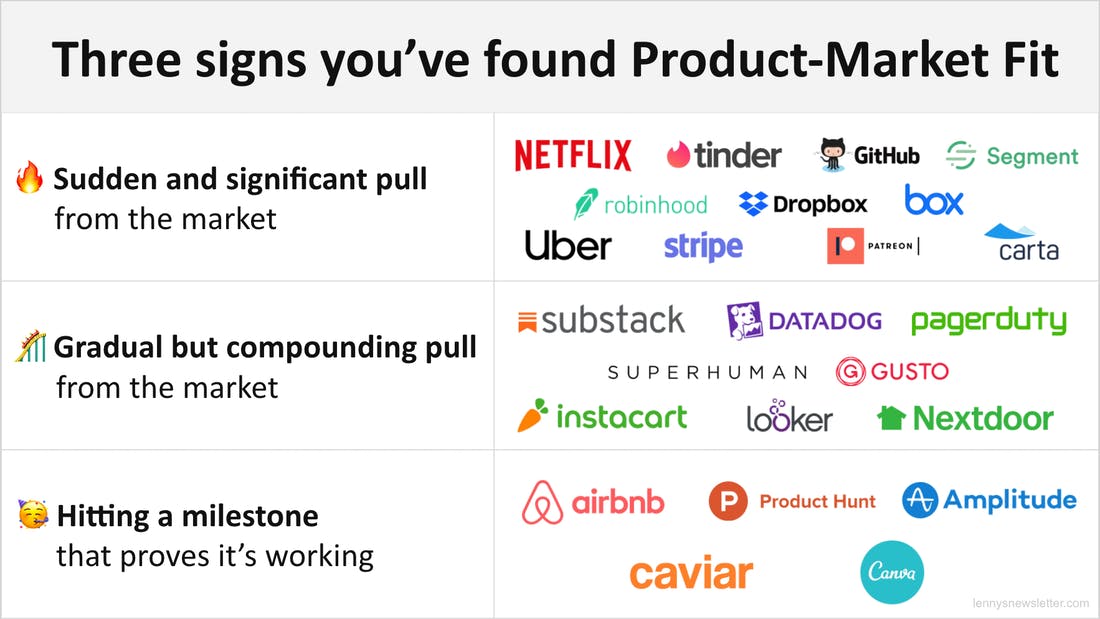
Some of my biggest takeaways from these stories:
1. Market “pull” comes in many forms:
- An inflection in organic growth
- Customers asking to pay for the product before you ask
- Users flip from being excited about what you have to mad about what you don’t have
- Customers complaining when your site goes down
- People using the product even when it’s broken
2. About half of these companies found PMF immediately after launch, but half spent months or years iterating to get there:
- Netflix: 18 months
- Segment: 1.5 years
- Airbnb: 2 years
- PagerDuty: 2 years
- Superhuman: 3 years
- Amplitude: 4 years
Once they got there though, it became obvious.
3. The intensity of the pull is a factor of the fit (how good your product is at solving the user’s problem) AND initial market size (is it niche or broad). Dropbox, Netflix, and Tinder were 10x better products within a huge market —> sudden and broad pull. Instacart, Superhuman, and Substack were 10x better products but for a narrow set of initial customers —> steady and compounding pull.
What is Product-Market fit anyway?
I covered this in a previous post, and I want to make clear that getting to a feeling of PMF does not mean you’ll automatically be able to build a successful business. There are three things you have to get right to find True Product-Market Fit:
- Make a product that people want — that’s what this post is all about.
- Make a profit delivering this product to people at scale — companies like Cherry, Luxe, and Exec are valuable cautionary tales.
- Find and keep these people, sustainably — check out this previous post that covers the quantitative side of PMF, like retention and sales yield.
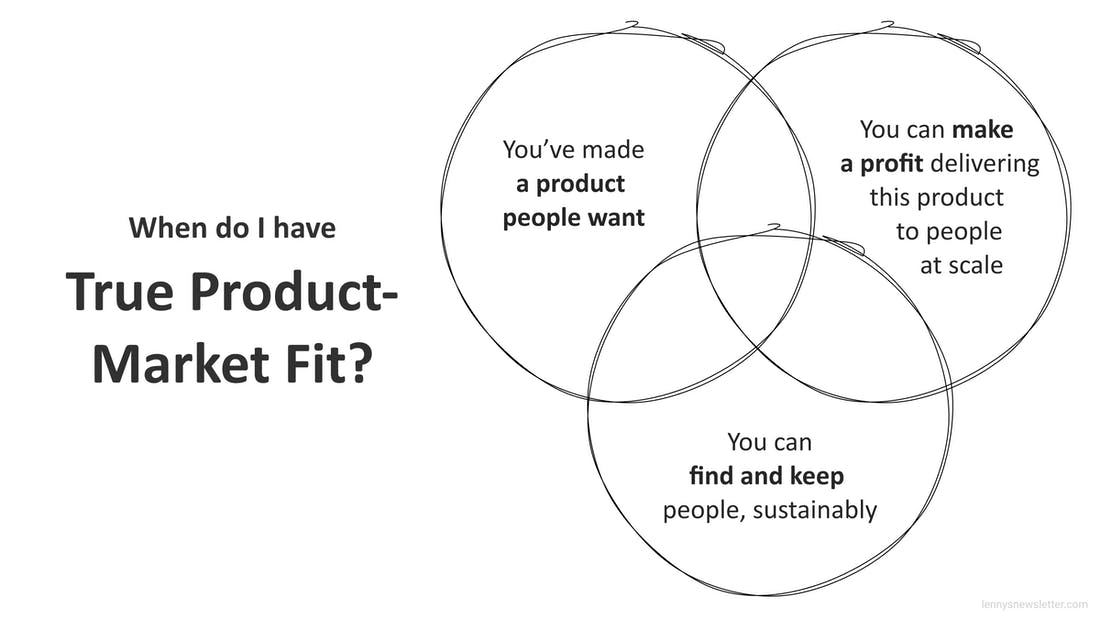
Of these three milestones though, the most likely to kill your business is the first: not building something people want. And that what this post focuses on — how do you know when you’ve built something people want? Below you’ll find stories from twenty-five companies — many of which have never been shared before — revealing the moment they realized they had something special.
Let’s dive in!
❤️ A HUGE thank you to these generous humans who helped make this post possible: Alex Solomon, Brianne Kimmel, Calvin French-Owen, Chris Best, Cliff Obrecht, Dan Hockenmaier, Drew Houston, Henry Ward, James Beshara, Jason Wang, Jeff Morris Jr., Jeffrey Queisser, Joe Gebbia, Jonathan Badeen, Katie Dill, Keenan Rice, Li Jin, Marc Randolph, Matthias Wagner, Max Mullen, Nikhil Basu Trivedi, Nina Achadjian, Olivier Pomel, Patrick Lightbody, Rahul Vohra, Ryan Graves, Ryan Hoover, Samuel Yam, Sarah Leary, Scott Gorlick, Tai Rattigan, Todd Goldberg, Tom Preston-Werner, and Tomer London ❤️

Sign 1: 🔥 Sudden and significant pull from the market

“For me there was a visceral sense of your thing taking on a life of its own and lurching forward, like getting pressed into the back of your seat by a fast car or a plane taking off. The most standout moment for me was our demo video hitting the top of Digg (and then Reddit).”
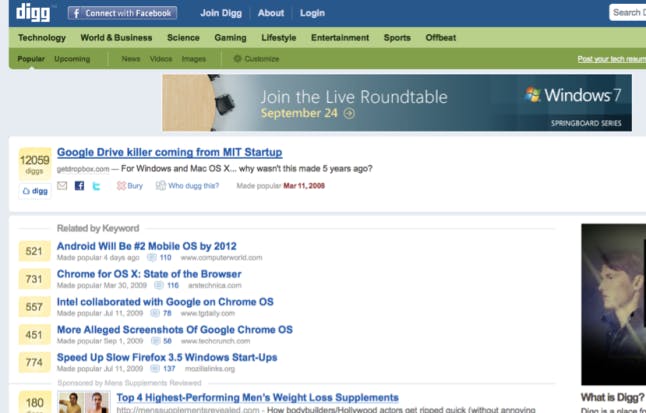
ー Drew Houston, CEO and co-founder


“With apologies to Justice Potter Stewart, I’ve often felt that Product Market Fit is not unlike hard core pornography: hard to define, but you know it when you see it. It took us at Netflix 18 months to finally find the repeatable scalable business model that worked.
As you know, I called my book "That Will Never Work" because everyone I pitched that original idea had that reaction. (Including my wife!). But they were right. The original idea didn’t work. But hundreds of failed experiments later, and after many a sleepless night of worrying, we finally tested the unlikely combination of No Due Dates, No Late Fees, and Subscription that ultimately was the thing that ended up working. And boy did it work. Within days of testing it we knew we had a winner.
Where before we were struggling to get traffic, all of sudden we couldn’t keep up. Our previously prodigious amounts of inventory were suddenly not enough. Engagement soared, churn went dramatically down. Everything started working!
If there was a moment when Netflix stopped being a start up and became a real company, it was then.”
ー Marc Randolph, first CEO and co-founder


“Uber never really had a product market fit problem — zero marketing budget and we were growing like a weed. Word of mouth was uncontrollable, and especially as regulatory heat started it's all anyone could talk about (is how it felt). Marketing was free because media loved the story.”
— Ryan Graves, first CEO, founding team


“Besides any gut feeling or friend input, I’d say we knew we had PMF towards the end of December 2012 when downloads started to pick up. By early to mid January 2013 those downloads started to skyrocket.
The rise of Tinder was really fast and there were very, very few changes to the product before it had already taken off. The swipe had been added within weeks of launching in August or September 2012. I think we were working on the 2.0 of the app already before we rose but it wasn’t finished or released until we were already spreading like wildfire.”
ー Jonathan Badeen, co-founder and CSO


“The biggest difference between our ideas pre-PMF vs. when we found it was this feeling of pull. Before we had any sort of fit, it always felt like we had to push our ideas on other people. We had to nag people to use the product.
When we hit PMF, we started feeling 'pull' for the first time. We solved one problem for people... so they started asking us to solve a second, third, fourth, and fifth. Most of our early product iteration was just responding to customer requests.”
ー Calvin French-Owen, co-founder


“For us it really felt like Geoffrey Moore's Inside the Tornado. Nearly 100% inbound sales because there was sufficient demand to keep the phones ringing.”
ー Jeffrey Queisser, co-founder and SVP of Engineering


“What indicated to us that there was something interesting here was that our friends who were using it asked if they could invite their friends, and those people invited their friends, and it spread through word of mouth process.
We just put up a wait list on our site and demand took off, over a couple months we had a huge wait list. We weren’t expecting it.”


“For Patreon, it was actually right after we launched with Jack's music video on YouTube video and patrons and creators started writing in.
https://youtu.be/mZ02alEkbLw
I'd never seen that level of passion and immediate resonance, and our launch was particularly fraught with stress since weeks before all the creators that were asked to launch rejected us. I actually emailed investors right after this, with a now cringey-esque note: ‘If you recall anything about me, I'm not one to exaggerate or overstate things, but based on the results and response thus far, I really think this company is going to be the one.’”
— Samuel Yam, co-funder and CTO


“About six months after we launched we changed our phone provider I think to DialPad or RingCentral. We misconfigured the system and for some reason after it prompted the user to "Press #1 for Sales" and the user pressed the button, it would just hang up on the caller. We didn't know about it for three weeks because we were just trying to fill the non-phone orders.
The way we found out was a prospect was able to contact us through chat support and wrote "I've been trying to get to your sales people for weeks and you keep hanging up on me!!! Why won't you take my money???" That's what product market fit feels like.”
ー Henry Ward, CEO and co-founder


“When we launched our private beta (mostly enthusiasts from the Ruby community) we were offering it for free. To our surprise, users started writing to us asking ‘Can we pay for this??’ They liked it so much they wanted to pay for it. That was the first sign this was going to work.
Our early users were individuals from the Ruby community. These people already demonstrated they were willing to operate on the cutting edge, Ruby was really new still in 2009. It was critical that we were embedded in that community before then, I don’t think we’d be able to convince people to try GitHub otherwise.
After we got traction with individuals we were able to expand into SMBs, and then enterprises.”
— Tom Preston-Werner, first CEO and co-founder


“I remember distinctly it was a Friday night. We had been working on the wait list in preparation for our press launch, which would have been, I think, the following Wednesday or Thursday. Everyone goes home, and I wake up Saturday morning, and I open up Google Analytics, and I see something like 600 concurrents on our site, which nobody knew about at that point. I was just like, ‘What's going on? This is not normal. Something must be wrong. Right?’
I'm just screenshotting the page; I'm calling my parents saying, "Oh, this is crazy. It might actually be working." And up until that point, we never really had an idea of what success, at least in the consumer space, was like. That was sort of the first moment where we built something that actually worked.
We ended up getting 10,000 sign-ups that first day, over 50,000 the first week, and almost 1 million in the first year.”
ー Vlad Tenev, CEO and co-founder (source)

Sign 2: 🎢 Steady and compounding pull from the market

“Early on I had product-market fit anxiety. Do we have it? How will we know? There isn't really a moment I can point to where that changed. We've just been growing fairly consistently, and gradually the how-do-we-keep-up anxiety got bigger and bigger until there wasn't time left in the day to worry about whether we had product-market fit.
We did have retention curves that looked pretty good from early on, especially for paying readers, and writers with paying readers.
ー Chris Best, CEO and co-founder


"We found pockets of PMF with specific segments of founders, managers, executives and business development professionals. Once we recognized this, we were able to focus the entire company on serving that narrow segment better than anybody else. It’s a commonly held view that tailoring the product too narrowly to a smaller target market means that growth will hit a ceiling — but I don’t think that’s the case.
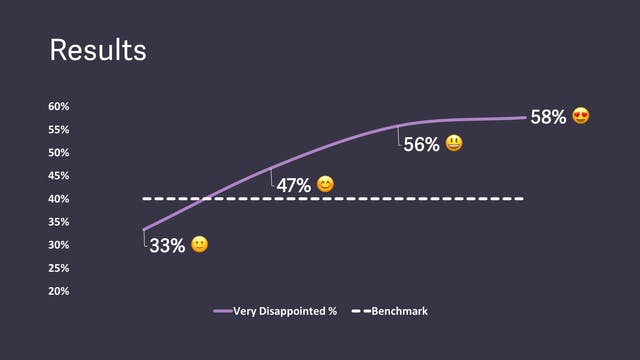
The biggest specific moment of realizing we had PMF though actually occurred just when I had arrived at a conference. Before I'd left, I'd asked our Head of Growth to update all our analytics. What we saw was that every single metric was amazing — growth, DAU/MAU, PMF score, NPS, virality, CAC payback, CAC:LTV, activation rates, long-term retention rates, and so on. That was when I realized that I could put together a series B deck that would raise an awesome round. And so I did!
Just a month later Superhuman was on the front page of the New York Times, in the Economist, and in the Guardian.”
ー Rahul Vohra, CEO and co-founder


“For Instacart, product-market fit happened across a series of moments. we found product-market fit very early on with people who wanted groceries delivered as soon as possible and didn’t care which store they came from. This made us feel like we had achieved product-market fit but it was only with a small sub-segment of customers.
The average customer wanted to shop from their favorite grocery store. So, we formed partnerships with top retailers. As a result, customers started to seek us out and word of mouth grew. We then signed more partnerships, reached a larger scale with customers, and in turn attracted more partners.
Ultimately we created a marketplace where most customers can shop from their favorite stores, and as a result, customers have a great experience using Instacart and want to share it with their family and friends.
Initial signs of product-market fit feel a bit like a calm breeze, while true product-market fit feels like a powerful wind at your back, accelerating you forward and compounding over time.”
ー Max Mullen, co-founder


“I distinctly remember one day when I thought we had reached product-market fit. We only had about ten neighborhoods using Nextdoor at the time. One of our engineers needed to upgrade the database which required taking the service offline for about an hour. As a lean team, he decided to start the migration (and make Nextdoor unavailable) around lunchtime in the middle of the week. We thought no one would notice the downtime since we had less than a few hundred users at the time.
About ten minutes after taking the servers offline, I started getting emails and phone calls from concerned users. What happened to Nextdoor? One user called me in a panic because she needed to contact a neighbor immediately and the directory on Nextdoor was unavailable. Another user was worried that the service was suddenly gone and he was trying to organize a neighborhood meeting that night to save a local park. We rushed back from our lunch break to get the servers back online as soon as possible. It was an embarrassing mistake to take the service down mid-day without any advanced notice. But the good news was we had clearly built something that mattered in the lives of users – they noticed within minutes when the service was unavailable.
If your users are urgently calling and demanding access to your product, you have clearly built something of real value. That’s product-market fit.”
— Sarah Leary, co-founder


“We didn't have a sudden influx of new users, but from the moment we flipped from closed to open beta, we started seeing a regular influx of sign-ups, and as we added key features (such as alerting!), we saw them use our product more and more actively. This constant influx of new users has grown ever since then..”
ー Olivier Pomel, CEO and co-founder


“I can't recall a specific moment in time when it clicked and we said we had product-market fit. Instead, it was more of a transition where our confidence that we had reached PMF grew over time.
We launched the beta version of PagerDuty in the summer of 2009 and the paid version in Dec 2009. That early version was very much an MVP oriented around alerting; it didn't even have the concept of incidents and incident tracking where you could track multiple incidents (issues) broken at the same time. We quickly realized that and added the concept of incident tracking in early 2010.
Throughout 2010 and 2011, we saw exponential month over month growth... if I remember correctly >10% month over month growth in 2011. (Keep in mind, that growth was on a small base... I believe we hit $1m in ARR sometime in 2011). By the middle of 2011, we felt pretty confident we had product-market fit, as we were solving a real hair on fire problem with the platform (namely, ensure critical issues were handled quickly and no critical issue would fall through the cracks and impact customers and the business for an extended period of time) and seeing that consistent exponential month-over-month growth.”
— Alex Solomon, CTO and co-founder


“We had about 10 customers pre-launch (about 12 months of selling before launching), and we got them all through founder based selling & our networks. So I wouldn't say we had product-market fit yet. Although we knew something was there, we didn't yet know if this was a mainstream buyer or a niche.
For a little background, these customers were not your typical analytics software buyer & they weren’t already buying any other analytics tools at the time (data warehouses or BI tools). They were engineers who were stuck doing data projects for the business. They were developers at the core and gravitated to Looker because it was a developer oriented/code-based way to do analytics in the backend, with a frontend that any business user could use.
So over the 5ish months after launch two things happened that created our opportunity to be the next generation BI tool in the market — our fit happened because the market shifted:
- It turned out that there was a whole new generation of product/data people within companies who, once exposed to Looker, had the same revelations as our early engineering buyers
- AWS launched a new class of data warehousing in the cloud called Redshift. This was the first time data warehouses were easily accessible & consumable, and became AWS's fast growing service ever. From there it was clear that the data landscape was changing we had the perfect fit for it.”
— Keenan Rice, early employee


“As a founding team, we are pretty self-critical and tend to focus on how we can improve things for customers, or what's broken and how to fix it. So I think I only realized it 2-3 years after it happened. In retrospect though, a pretty good sign for PMF was when in spite of the obvious gaps in our marketing, product and care, we saw consistently high NPS (80+), low churn, and record high MoM organic growth.”
— Tomer London, co-founder

Sign 3: 🥳 Hitting a meaningful milestone that proves the idea is working

“Traction is one indication of product-market fit but there’s nothing like seeing your product being used in the wild. I distinctly remember walking into Philz one day overhearing a small group of friends talking about Product Hunt and their upcoming launch. I teared up. As founders, we spend so much effort building and hoping people love what we’ve created. Seeing a stranger use what we’ve built unprompted might seem trivial but it’s an impactful moment for myself and many others.”
ー Ryan Hoover, CEO and co-founder


“When my mom booked her first Airbnb, I said to myself, I think we got something here!”
ー Joe Gebbia, co-founder


“We knew we had product market fit when we had our first large company (Kabam) replace their lunch service with Caviar for the entire company. That was when we became sustainable and ramen profitable.”
— Jason Wang, first CEO and co-founder


“At Amplitude, Product Market Fit happened when we transitioned from focusing on Mobile Analytics to focusing on Product Analytics — building analytics for product teams.
It was a pretty nerve wracking experience to shift our sales, marketing, and product strategy to focus on the needs of Product teams — I definitely questioned whether it was a justified risk given the traction we had already been seeing. That year we held our first conference called Amplify, the entire agenda was geared towards Product teams, and so many people showed up we had to open extra sections of the venue and have people standing at the back. >1,000 people from Product teams around the world showed up. While I was in line to get my pass I heard a whole team from a large bank talking together - someone said ‘I’ve been in Product for 10 years and this is the first time a company has ever focussed on us’.
That’s when I knew we’d found PMF.
ー Tai Rattigan, early employee


“The moment we thought we might have product market fit was when we saw our designs being published on social media. At the time we had less than 200 templates so we knew what they all looked like. It was a real ahh-hah moment when we saw that Guy Kawasaki was using Canva to create more engaging social media posts.”
— Cliff Obrecht, COO and co-founder
–
This story was originally published on Lenny's Newsletter — The #1 business newsletter on Substack.
Comments (5)
Mayur Sharma
I love learning new languages.
Stefani Kovachevska
Passionately fusing tech & business 🦾
jitendra khorwal
Zelig to develop habit-forming products
Nitin Thotapalli 😺😺
Enthusiastic Product Engineer.
Pooja Kumar
Passionate. Innovative. Entrepreneur.
More stories
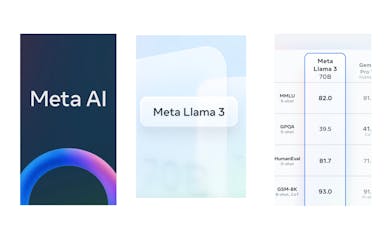
Kyle Corbitt · How To · 3 min read
What we've learned in 3 days of Llama 3

Aaron O'Leary · Announcements · 2 min read
Introducing Shoutouts

Finn Lobsien · Opinions · 5 min read
Can Devin AI Replace Product Managers?

Aaron O'Leary · News · 2 min read
Meet Nvidia's new localized AI chatbot

Sarah Wright · News · 2 min read
The top 15 AI products from 2023

